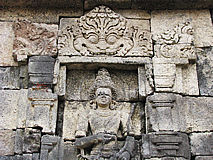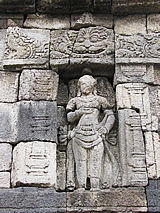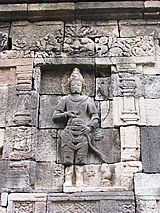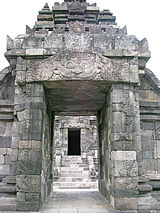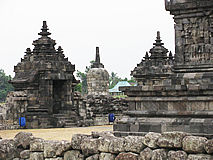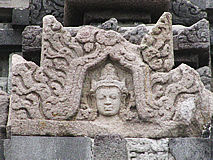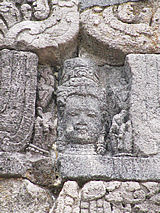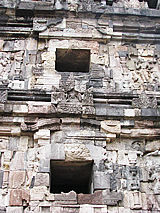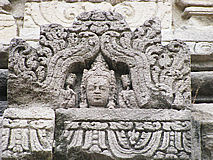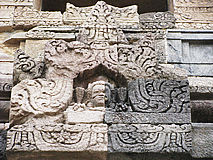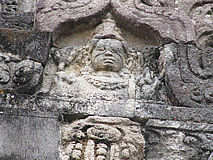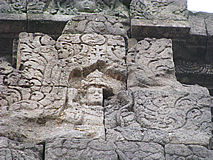Official website
of
HAN MARIE STIEKEMA
VIVA! JAVA
* Javanese mysticism
(Kebatinan) & Traditional Javanese religious tolerance: a model to the world?
*The Yogya Kraton Myth
*Taman Sari
*The Gunungan
*Tutup Ngisor
*What we can do for Java....
*Java: Land of Kala, its Candi's (Temples):
*Borobudur 1
*Borobudur 2
*Borobudur 3
*Borobudur 4
*Borobudur 5
*Borobudur 6
*Candi Mendut
*Candi Pawon
*Candi Ngawen
*Candi Sari
*Candi Kalasan
*Candi Sambisari
*Candi Prambanan
*Candi Lumbung
*Candi Bubrah
*Candi Sewu
*Candi Plaosan
*Candi Gebang
*Candi Ijo
*Candi Banyunibo
Candi Plaosan 1
A surprise right from the
start
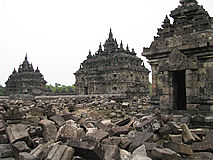 |
CANDI PLAOSAN |
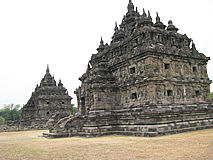 |
Usually, either researchers just describe (T. van Erp) or explain phenomena through the eyes of Buddhist scriptures (J.L..Moens). The third (my) way is to first look at basic elements. With an "unbiased" eye I put elementary findings first, only later "filled in" with details. If one proceeds like that, perspectives change, sometimes quite dramatically, like e.g. in the case of Plaosan. Where was this temple all about? |
||
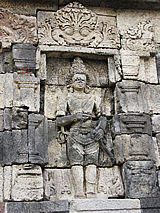 |
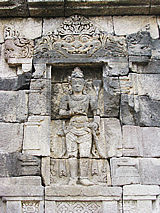 |
|
|
||
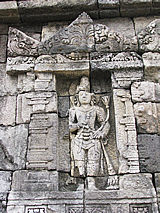 |
The first striking thing is that - like e.g. Borobudur, Prambanan and Kalasan - Kala is everywhere. She is the universal, omni-present principle that connects everything else. This is - of course - not accidental. It must have been purposely done. It means that Plaosan is a "Kala-temple". While Kala is uniform, emphasizing its transcendental Dimension, the images of Bodhisattvas and Buddhas are individual. They play their personal roles against the background of the Unchanging Absolute (Kala). |
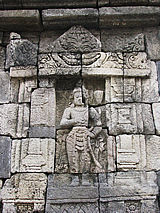 |
|
||
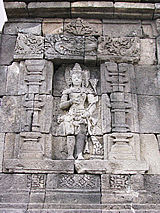 |
These statues are (wo)man seize, the Kala's impressive. Furthermore there are Kala's above gates (8x), niches (38x). The most astonishing thing, however, are the Bodhisattva-heads, surrounded by a protective structure ((23x). Until now I have not come across any explanation of this unique phenomenon. |
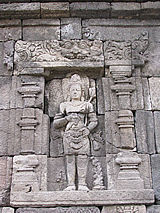 |
|
||
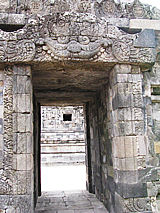 |
First some examples of gates with Kala heads |
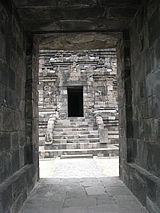 Kala head on next building |
|
||
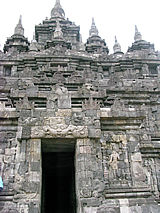 Kala head on top of entrance to a chamber |
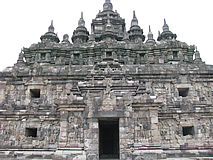 The entire facade |
|
|
||
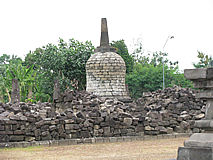 |
Rather surprising: a solitary stupa built directly on the ground. This is rare. Does this stupa underlines the mission of this temple e.g. a place of rebirth? |
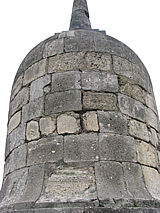 |
|
||
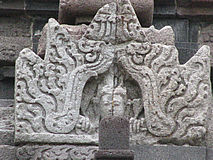 |
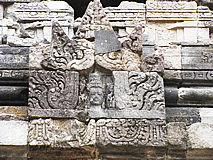 |
|
|
||
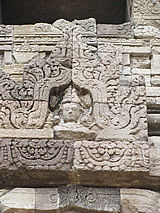 |
"HEAD IN THE WOMB" |
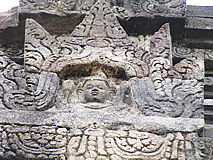 |
Head (centre) in between two Kala's (below and above) |
||
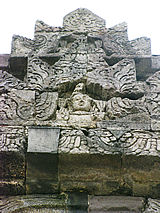 |
What is intrigueing are the heads of Bodhisattva's/Buddha's surrounded by a protective structure. The latter could be interpreted as a stupa. The same idea as at Borobudur (Buddha's in the stupa's) but portrayed differently here. Stupa's are expressions of Enlightenment, ultimately they represent Nirvana or.....the Cosmic Womb. Like J.L.Moens has described in the case of Borobudur, where he assumes that the Great Stupa is the Realm for "birth and death" - a pre-Buddhist Javanese mythology - I interpret these images as the birth of the Deity out of the Cosmic Womb.... |
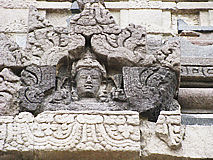 |
| Other temples e.g. Ngawen also have "Heads in the Womb". The special thing about Plaosan is that there are so many of them. |
|
|
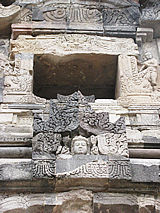 |
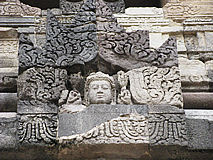 |
|
Indeed, a womb-like structure |
||
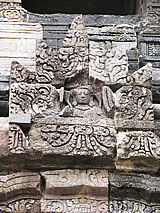 |
The abundant decorations/vegetation/clouds indicate the Heaven from which this particular Bodhisattva is descending. Because these images are scattered all around, "birth" of avatars must have been of utmost importance to the builders of Candi Plaosan. The fact that this temple was created by a woman - Sri Kahulunnan - and that furthermore it is very likely (J.L. Moens) that one of the vihara's (temples) belonged to royal princesses e.g. priestesses....it is not too daring to assume that Plaosan was indeed involved with rebirth philosophies. Why I will explain in part 2. |
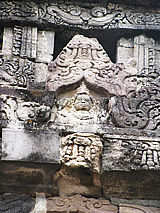 |
|
||
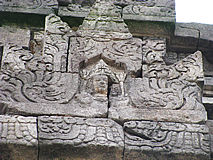 |
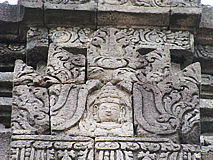 |
|
|
A statue of Prajnaparamita ("Womb of the Buddha's") seems to have been found at Plaosan. Again, some additional indication for the possibilitiy of a female dominated enterprise at Plaosan. | |
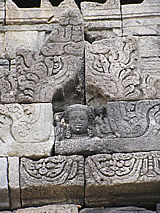 |
That one half of the temple was inhabited by women is dryly mentioned by some authors (J.L.Moens/Mark Long). This female imput - not only in case of Plaosan, but generally - doesn't stir too much excitement in the male researchers. To me it is sensational: the feminine principle heavily involved with e.g. dominating an entire Buddhist temple. It gives a totally different perspective - not only to the females involved - but to our understanding of religious history on Java. |
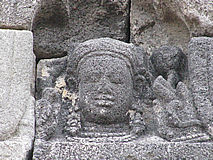 |
Prambanan-4
1997-2011
© Copyright Han Marie Stiekema. All rights reserved.
Everyone may use this website as a source of inspiration. However, since it
is freely given, no-one can claim, copy or derive any text, rights,
position or status from this website.
Last revising: 07/21/12
